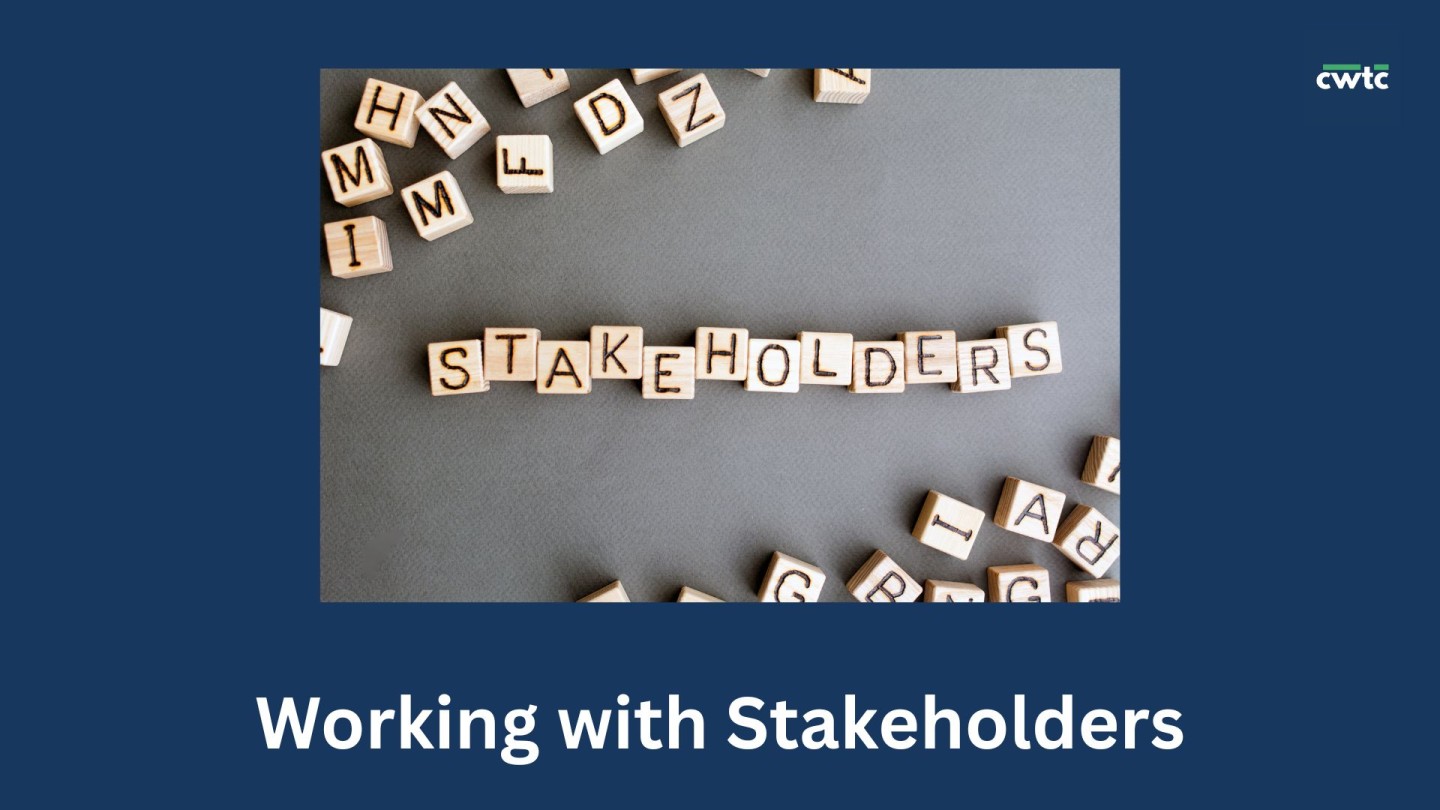The Stakeholder Engagement Pyramid, Power Grid, and Communication Plan are the three tools we live by as we navigate the management of our project stakeholders.


The Stakeholder Engagement Pyramid, Power Grid, and Communication Plan are the three tools we live by as we navigate the management of our project stakeholders.

Do you find yourself managing projects when your primary role isn’t formally “project manager”? At work, it could be a new accounting system, marketing effort, or new process. At home, it could be a vacation, a group outing, or building a shed like I did recently. It was as much a project as anything I was doing at work. This is all Project Management.
Regardless of its scope or formality, your project has a higher likelihood of success if you apply these five key principles to your efforts.
Principle 1: Define What You’re Doing
Anyone who invests time or money in the project should understand the project and its scope to prevent roadblocks or disagreements down the road. I briefly define my projects in two or three sentences. For example, "My car doesn’t fit in my garage because my bicycles and tools are taking up too much space. I’m building a shed in my backyard so that I can both store my toys and park my car." I like to use "so that" in my project definitions as part of the justification. For more formal projects, I create a one-page Project Charter that includes other key information. This is something very common in project management. In fact, it's so important, we have self-paced course, walking you through it.
Principle 2: Know Your Stakeholders
In the project management world, we call anyone impacted by project outcomes “stakeholders.” Some may know they’re impacted while others may not. The latter group might catch you by surprise later with their opinions and needs, so you want to tease them out and share your project definition as early as possible.
I use a Stakeholder List to get input on stakeholders and build communication plans. Don’t forget the often-forgotten support teams like legal, finance, or customer success! The earlier you involve them the better in my experience (even if it’s a courtesy heads-up).
For my shed project, it was obvious that my spouse and the builder cared about the shed. However, did I think about potential neighbor concerns about noise or views? Would my children complain about moving their bicycles to the back? I spoke to them early to understand their concerns and get their buy-in up front.
Principle 3: Guesstimate the Timeline
Many factors go into estimating the time to complete a project (all of which are likely to change over time). The first trick is to define tasks at the broadest level that’s understandable yet not too difficult to estimate. When I feel good about the task definition and time guesstimate, I then consider dependencies by asking myself, “Are there deliverables from others that could impact my project tasks?”
In a home project like building a shed, estimating the task time may not seem like a big deal. However, it might be if you live in a stormy climate. How long will it take to order construction materials? To build the foundation and the structure? Is the contractor available if you're not building it yourself? Will you be done before the first rains?
It's become more and more acceptable not to create exact time estimates for projects. In fact, it’s often unrealistic. However, in my view, it’s worth the effort to sketch out the broadest level of tasks, guesstimate the time to complete them, and understand the dependencies at the outset. Your stakeholders will appreciate it.
Principle 4: Drive Decisions Effectively
I’ve learned that decision-making is the single most important aspect of a successful project. It’s what throws many projects off course. Keep tabs on what major decisions need to be made and who is ultimately making those project decisions.
I keep an ongoing list of open questions and decisions for my projects. Some clients use a decision-making process that includes role frameworks such as DACI (Driver/Approver/Contributor/Informed) to guide particularly complex decisions. Even if you’re not this formal, I always recommend identifying who needs to be involved and who’s making the decision. Choose a framework that fits the culture and needs of your team and decision-makers.
My shed project had many decisions and questions. I didn’t really care about the design decisions. As long as it fit in the space we allocated, my spouse was in charge of the design. However, I cared about the spend, so we both needed to approve the expenses. We agreed to this before we began.
Principle 5: Be Flexible During Execution
One of the greatest gifts of the Agile software-development movement is the idea of a flexible mindset. Unless you’re leading a project with well-known milestones and tasks, it’s highly likely that your project will evolve over time. More important than a plan that you stick to is a plan that can respond to change.
Good project managers create “operating mechanisms” to anticipate and respond to the unexpected. They’ll have a value-added check-in rhythm and real-time risk assessment tools ready to catch and manage issues.
While we had a good plan for the shed project, we ran into unexpected rocks under the surface that required different tools and effort. Yep, that took more time and labor than we had anticipated. Luckily, we built a schedule buffer and completed it before the rains!
Start Now and Learn More
Whether you write them down or just think about them, couple these five principles with excellent communication and I promise you will be on the path to project success.
If you enjoyed these tips, sign up for our newsletter so you don’t miss a future post or learning event announcement.
CW Training and Consulting specializes in hands-on, interactive project management skills boosting workshops - either off the shelf or customized to your needs. Contact Us and we will help you find the right learning solution for you and your business.

You may have read articles on how good project communication is critical to project success. So what is good communication? Here are our best tips to help you become an expert communicator on your project. Some of them even apply in life!
1. Be clear and direct.
There’s nothing more frustrating for your listener than vague language and rambling. Know that sometimes your message may be difficult to hear, but softening the message too much doesn’t help. What helps is being clear and direct with facts, requests, and consequences. If you’re asking someone to work the weekend, make a direct request (“If you and I work this weekend, we can bring in the date. Are you able to do that?”) instead of a vague statement (“I wonder if there’s anything we can do to help bring in the date”). There’s an added benefit that you’re more likely to get a clear, direct response, too.
Describe the project status or a newly discovered issue from more than just your perspective. Address what your stakeholders care about and what their worries might be, including relevant context, and use specific, straightforward language — not jargon. If you’re sharing the news that your project date is slipping, your manager or sponsor will want to know that you understand why it happened and how you will prevent it from happening again. The same goes for good news. Show that you understand the why.
Even if your project is small or doesn’t impact many people, it’s worth your time to identify whom you’ll communicate to and the communication types, channels, and frequencies you’ll use. Your core working team might meet weekly and also have a Slack channel for quick questions and updates. The rest of your stakeholders might benefit from a monthly email update that you post on your project web page, too. And if you’re new to the company or the role, it’s worth checking around for standard communication tools and processes. You may not have to reinvent the wheel!
If you have a project sponsor, take the time to learn their style and preferences for project communication. Hands-on or hands-off? Slack or phone calls? Lots of detail or just a summary and specific asks? Your project sponsor is your best ally in setting you up for success, addressing any challenges, and ensuring project follow-through, so get to know them well.
When there are challenges, describe what has to change through the lens of the process rather than making it personal. For example, instead of making it about you and a teammate (“Why didn’t you tell us you were running late? Did you think we didn’t need to know?”), focus on why being late is a problem, letting the process do the talking (“As a downstream partner, my team is impacted by this project, so we’d like to know as soon as you know that the project has slipped. Can you include us in your communications?”).
If it fits with your style, find ways to infuse a little humor into your project communications. It’ll go a long way to reducing stress, both yours and your audience’s, and makes the work environment a little more pleasant. Ask at least one other person to review your humor for appropriateness, though, and know your company’s culture so you don’t go overboard.
That’s it! Do these six tips for effective project communication consistently and your projects will run more smoothly. Here’s to great success!
Find this and other free resources at cwtrainingandconsulting.com and if you enjoyed these tips, sign up for our newsletter so you don’t miss a future post or learning event announcement.
CW Training and Consulting specializes in hands-on, interactive project management skills boosting workshops - either off the shelf or customized to your needs. Contact Us and we will help you find the right learning solution for you and your business.
Have you found yourself managing projects when your primary role is NOT a project manager? As a friend and co-worker once said, "Life IS a Project" and we all want project success. Regardless of your role at work or at home, there are always projects to be accomplished. At work it could be a product launch, product promotion or product development. Maybe you're in operations and are more focused on the back office success of the company. At home, you could be planning a vacation or a group outing of some sort. Maybe it's building a shed.
Management of your project can be as formal or informal as fits the people affected by the project and the scope of the project. However, any project has a higher likelihood of success if the person leading the project thinks about these 5 key principles that cross all methodologies, scope definitions and interested parties.
In this article, I am going to highlight the 5 key principles to any project's success. This is a kick off to a series that will go more in depth on each of the principles.
Whether you are building a shed or launching a new product, it always helps to have a concise project definition. The reader of a good project definition understands why you are doing the project and its ultimate outcome. Think of it as a summary of your business case. For example, "My car does not fit in my garage because my bicycles and tools are taking up too much space. Therefore, I am building a shed in my backyard so that I can store my toys and park my car." I always like to be sure there is some form of "so that" in my project definitions.
Most successful projects start with support from those who are impacted by the project - whether they know it or not. There are often conscious stakeholders and unconscious stakeholders. Conscious stakeholders know about the project and often either support, do not support or are indifferent about the outcomes. Unconscious stakeholders do not know they should care about the process or outcomes of the project. These are the folks who might catch you by surprise down the road!
For my shed project, it is obvious that my husband, the builder and I all care about the shed project. However, do I need to think about my neighbors? Will they care about the noise or the impact on their view? What about my children? Will they support the move of their bicycles?
In a simple example like a shed project, task estimation may not seem like a big deal. However, if you live in a region that gets rain and snow it may be very important. How long will it take to order the parts; is the contractor available; how long will it take to build the foundation? The structure?
Clear task estimation is not synonymous with accurate task estimation or even thorough task estimation. Much like project definition, it is more important to clearly communicate the meaning behind tasks and estimates than to be exact in their estimation at the outset. For example, are your tasks tied clearly to outcomes? Are they understandable? Are you estimating effort or duration?
One of the greatest gifts of agile software development is the idea of a flexible mindset. Unless you have a project that has been done before, with well-known milestones and tasks, it is highly likely that your project is going to evolve over time. More important than a plan that you "stick to," is a plan that can respond to change and a project manager who has the mechanisms in place to understand how the project is progressing.
In my shed project, although we have a good sketch, I need to be ready for the plans to change once the building begins. This is very typical in home remodels, for a different example. Once you pull off the sheet rock, you never know what is behind the walls. Once you start doing the work, you can expect surprises. A good project manager is prepared to anticipate change.
Decision-making is not one of those things you find in all of the standard project management approaches. However, I have found decision-making to be the single most important aspect of a successful project. It is critical to know who is ultimately making the decisions that impact the project. I like to keep a list of "open questions/decisions" that have to be made for project success. Some companies use decision-making frameworks to guide their projects.
In the shed project, who approves the spend? Who approves the design? The location? I personally do not care about the design, for example. As long as it fits in the space we allocated, my husband can design it however he wants. However, I do feel that we have a budget and I am an "approver" of the ultimate spend.
Whether you write them down or think about it in your head - applying these 5 principles can help any project get started on the right foot towards success.
Would you like to go more deeply into the 5 principles of project success?

Copyright 2025 CWTC © All Rights Reserved